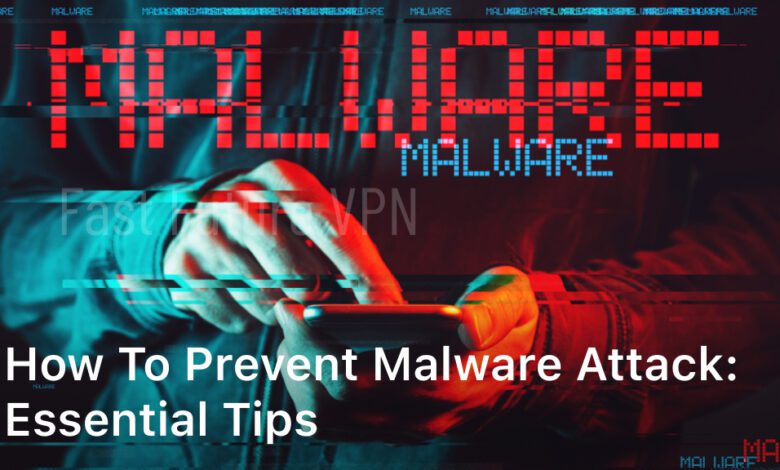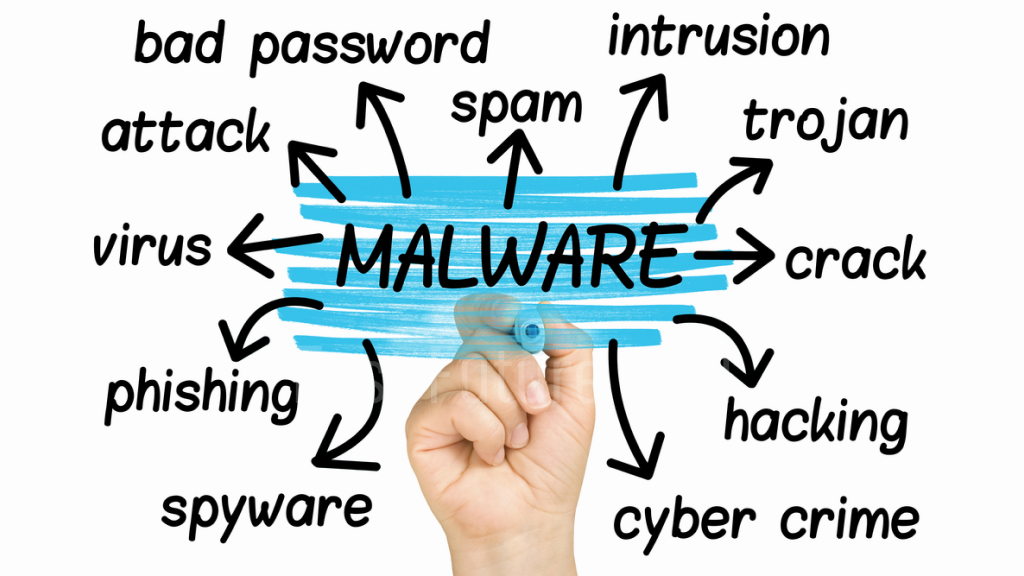
Malware attacks can cause significant damage to your devices and online presence. The best way to safeguard against such attacks is to follow malware prevention tips and implement best practices for preventing malware. In this section, we’ll explore essential techniques to secure your devices and protect your online activities. By following these tips how to prevent malware attack, you can minimize the risk of malware attacks and secure your digital presence effectively.

1. Understanding Malware and Its Threats
Malware poses a serious threat to both your devices and online activities. It’s vital to understand what it is and the potential risks it poses to effectively prevent malware infections.
Malware is a type of software that cybercriminals use to infect your device, steal your data, and disrupt your devices’ normal operations. Malware can come in various forms, such as viruses, trojans, worms, and spyware, each with their distinctive characteristics and impacts.
Some malware threats can be incredibly severe, resulting in the loss of sensitive information, financial loss, and damage to your device. Taking proactive measures to prevent malware infections should be a top priority for anyone using digital devices and online services.
By understanding the risks associated with malware and the types of threats, you can take appropriate measures to protect your devices, online activities, and personal information rigorously. In the following sections, we will discuss essential tips to prevent malware attacks, strengthen your cybersecurity measures, practice safe browsing habits, and utilize antivirus and anti-malware software.
2. Strengthening Your Cybersecurity Measures
In today’s technology-driven world, cybersecurity is more essential than ever before. Cybercriminals are always on the lookout for vulnerabilities they can exploit to gain unauthorized access to your devices and steal your sensitive data. In this section, we’ll explore some best practices to strengthen your overall cybersecurity and secure your devices from malware attacks.
Use Strong Passwords
Using weak passwords is one of the easiest ways to compromise your online security. Cybercriminals use advanced tools to crack simple passwords easily. Therefore, it is essential to use strong and unique passwords for every account. A good password should include a mix of letters, numbers, and special characters. You can also use a password manager to generate and store strong passwords securely.
Enable Two-Factor Authentication
Two-factor authentication (2FA) provides an additional layer of security for your online accounts. It requires you to provide two forms of identification, usually a password and a verification code sent to your mobile device. Enabling 2FA helps prevent unauthorized access even if your password is compromised.
Keep Your Devices Updated
Cybercriminals often exploit vulnerabilities in outdated software to launch malware attacks. Therefore, it is vital to keep your devices updated with the latest security patches and software updates. Most devices have an automatic update feature that you can enable to ensure they stay up to date automatically.
Install Anti-Malware Software
Installing a reliable anti-malware software is another crucial step to secure your devices from malware. The software can detect and remove malware infections before they cause any harm to your devices. Make sure to choose a reputable and trusted anti-malware program and keep it updated.
Be Wary of Suspicious Emails and Links
Phishing attacks are a common tactic used by cybercriminals to steal personal and financial information. They usually send you an email or a link that appears legitimate but is, in fact, a scam. Avoid clicking on suspicious links and do not provide any sensitive information unless you are sure of the authenticity of the request.
By implementing these best practices, you can significantly reduce the risk of malware attacks and secure your online activities from cyber threats.
3. Practicing Safe Browsing Habits
Practicing safe browsing habits is essential to avoid malware attacks. Cybercriminals often use social engineering techniques to lure users into clicking on malicious links. To secure your online activities from malware, take note of the following tips.
- Be cautious of suspicious links: Hover over any hyperlink or URL to reveal its true destination before clicking it. Avoid clicking on links received from unknown sources and those that sound too good to be true.
- Avoid downloading files from untrusted sources: Only download files from legitimate websites and sources to reduce the risk of malware infections. Downloading files from torrent sites and peer-to-peer networks increase the likelihood of infection.
- Keep your software and browsers up to date: Make sure to update your software and web browsers regularly. Software updates often include security patches, bug fixes, and other crucial enhancements that protect your device from malware threats.
By following these safe browsing practices, you can avoid malware infections and protect your online activities from security threats. Stay alert and skeptical of any suspicious activity, and always prioritize your online security and privacy.
4. Utilizing Antivirus and Anti-malware Software
One of the most critical steps in safeguarding your computer from malware attacks is to use reliable and effective antivirus and anti-malware software. These security programs provide an additional layer of protection against various types of malware infections, such as viruses, spyware, and Trojans.
Choosing the Right Antivirus Software
When choosing an antivirus program, make sure it has essential features such as real-time scanning, malware removal, and automatic updates. It’s also crucial to choose a reputable and well-known brand, such as Norton, McAfee, or Avast. These companies have years of experience and are continually updating their software to keep up with the ever-evolving malware landscape.
Configuring Antivirus Software
To ensure your antivirus software is working correctly, make sure you configure it correctly. Some critical settings to check include selecting an automatic update schedule, enabling real-time scanning, and setting up regular system scans.
Regularly Updating Antivirus Software
One of the most important aspects of using antivirus software is ensuring it’s regularly updated to keep up with the latest malware threats. Most antivirus programs provide automatic updates, or you can manually check for updates regularly.
- Always use reliable and well-known antivirus software to prevent malware attacks.
- Configure your antivirus software correctly to ensure it’s working effectively.
- Regularly update your software to provide optimal protection against the latest malware threats.
By following these tips and utilizing dependable antivirus and anti-malware software, you can significantly reduce the risk of malware infections and safeguard your computer and personal information.
Conclusion
Preventing malware attacks is critical in today’s digital landscape. By following the essential tips discussed in this article, you can significantly reduce the risk of malware infections and protect your devices and online presence from potential threats.
Remember to stay proactive in strengthening your cybersecurity measures, practicing safe browsing habits, and utilizing reliable antivirus software to safeguard your computer from malware attacks.
Stay vigilant and regularly update your software to ensure the latest security patches and protections against emerging threats. By taking these proactive steps, you can enjoy a secure and safe online experience.
FAQ
What is malware?
Malware refers to malicious software that is designed to infiltrate and damage computers, networks, and devices. It includes various types such as viruses, worms, Trojans, ransomware, and spyware.
How can malware attacks be prevented?
To prevent malware attacks, it is important to follow best practices such as keeping your software updated, using strong and unique passwords, being cautious of suspicious emails and links, avoiding downloading files from untrusted sources, and using reliable antivirus and anti-malware software.
What are some best practices for preventing malware?
Some best practices for preventing malware include regularly updating your operating system and software, using a firewall, enabling automatic system updates, avoiding clicking on suspicious links or pop-ups, being cautious when opening email attachments, and regularly backing up your data.
How can I secure my online activities from malware?
To secure your online activities from malware, it is important to use a secure and reputable internet connection, avoid revealing personal and sensitive information on insecure websites, use a virtual private network (VPN) for added security, and regularly scan your devices for potential malware threats.
How can I protect my computer from malware?
To protect your computer from malware, you should ensure that you have reliable antivirus and anti-malware software installed and regularly updated. Additionally, practicing safe browsing habits, avoiding downloading files from unknown sources, and keeping your operating system and software up to date can help in preventing malware infections.
What should I do if my computer gets infected with malware?
If your computer is infected with malware, you should immediately disconnect from the internet, run a full system scan using your antivirus software, and follow the recommended steps to remove the malware. It is also advisable to change any passwords that may have been compromised and consider seeking professional help if needed.




